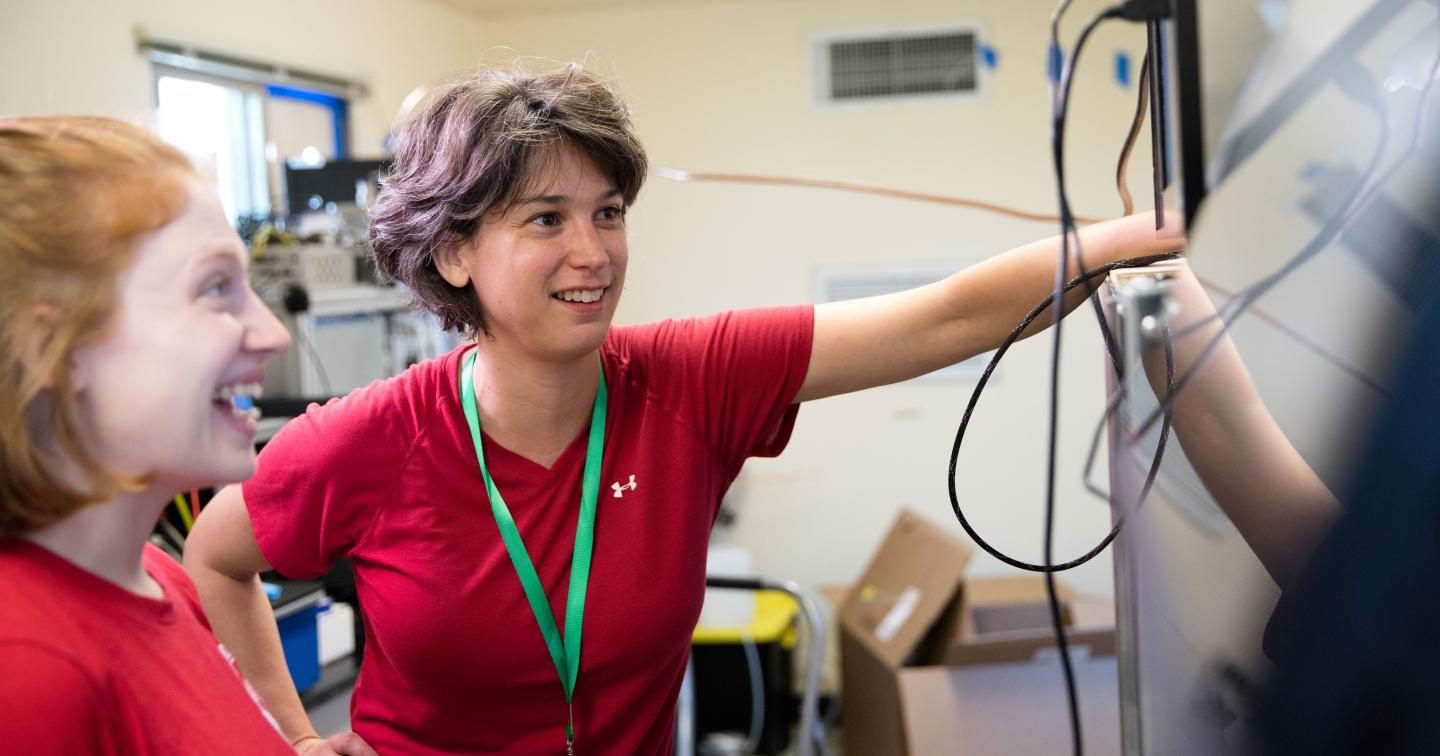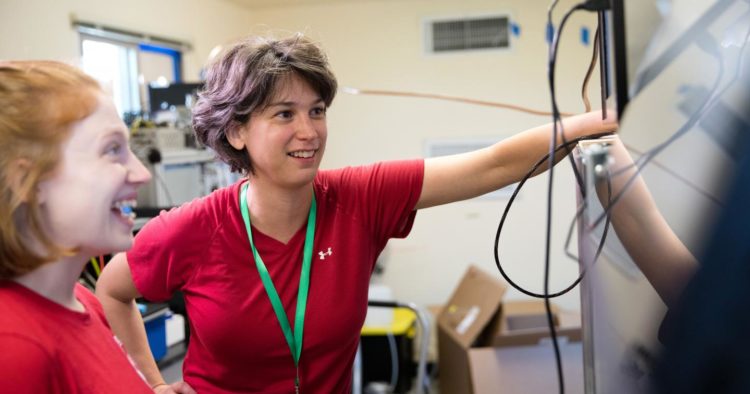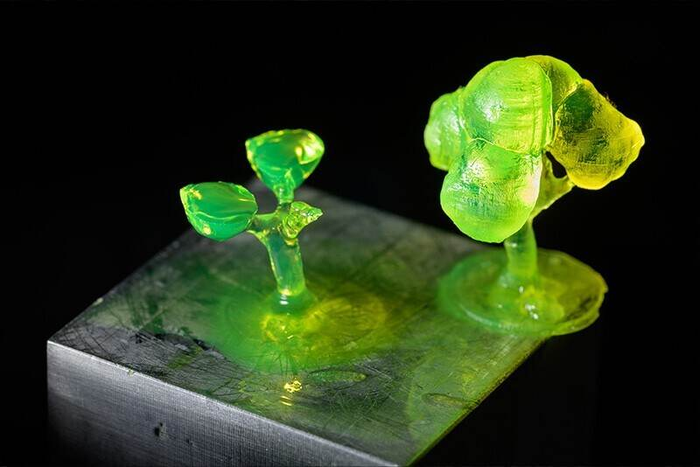CSU researchers report on the chemistry of bleach cleaning as part of the HOMEChem experiment

Credit: Callie Richmond
Colorado State University atmospheric chemist Delphine Farmer had spent her entire career probing the complexities of outdoor air – how gases and particles in the atmosphere move, interact and change, and how human activities perturb the air we breathe.
Then, she went inside.
That is, the Department of Chemistry associate professor turned her attention to the less-studied realm of indoor air. And she’s come to discover that the chemistry inside can be vastly more complex than that of outdoor air systems.
More than two years ago, Farmer and over 60 collaborators from 13 universities set in motion a first-of-its-kind experiment attempting to map the airborne chemistry of a typical home, subjected to typical home activities like cooking and cleaning. The effort was dubbed HOMEChem – House Observations of Microbial and Environmental Chemistry – and was led by Farmer and Marina Vance, a mechanical engineer at University of Colorado Boulder.
Now, as the team sifts through the reams of data they collected, Farmer and her CSU research team have published their first major study from HOMEChem. The paper, appearing in Environmental Science and Technology, reports what they learned about chemical reactions that occurred while mopping floors with a common bleach solution.
On HOMEChem, her first foray into indoor chemistry, Farmer “became a convert when I heard the statistic that we spend 90 percent of our lives indoors.”
“It’s puzzling, really, that all our health outcomes are tied to outdoor air,” Farmer said. “It made me curious as a scientist when I realized just how little we know about chemistry indoors.”
Her team of graduate students and postdocs is now busy crunching more data and compiling potential follow-up studies.
In the Test House
Backed by $1.1 million from the Sloan Foundation’s Chemistry of Indoor Environments program, the HOMEChem team descended on the perfect location for their experiments: the Test House at University of Texas at Austin, a full-size, manufactured “home” that serves as a kind of blank slate for scientific experiments. The team occupied the house for most of June 2018, simulating activities in an average Western home. Their efforts are detailed in an overview paper in Environmental Science: Processes & Impacts.
Their experimental run-of-show, which read very much like a family chore list, included things like cooking vegetable stir-fry, scrubbing surfaces with household products, and wet-mopping floors. One session was even dedicated to cooking a typical Thanksgiving meal while recording resulting emissions. All this, while operating hundreds of thousands of dollars’ worth of sensitive equipment that could detect everything in the air from single-nanometer particles, to hundreds of different volatile organic compounds.
Farmer’s team from CSU included graduate students Jimmy Mattila, Matson Pothier and Erin Boedicker, and postdoctoral researchers Yong Zhou and Andy Abeleira. The team deployed 12 separate instruments for tracking three broad categories of compounds: organics, oxidants and particles. Postdoctoral researcher and data scientist Anna Hodshire recently joined Farmer’s team and will be responsible for managing the large datasets the researchers gathered over the course of HOMEChem.
Bleach cleaning results
For the bleach-cleaning study, Farmer’s team recorded the airborne and aqueous chemistry from several consecutive days of mopping a floor with bleach, diluted to manufacturer’s specifications. On some days, they also observed how that chemistry was affected when floors were mopped following a cooking session.
According to the paper, the researchers observed sharp, albeit short-lived, spikes in hypochlorous acid, chlorine and nitryl chloride in the air, which are compounds more typically associated, at lower levels, with the outdoor air of coastal cities.
Mattila, the paper’s first author and graduate student who operated a chemical ionization mass spectrometer during HOMEChem, said the team was surprised to learn that multi-phase chemistry – not just the gas phase – controls the production and removal of inorganic compounds in the air during bleach cleaning. The bleach in the mop water, applied to the floor, would react with the molecules in the house’s surfaces and walls to create new compounds. It turns out such surfaces – and the layer of muck many homes accumulate from years of living – can act as reservoirs for a wide variety of acidic and basic molecules that can then interact with substances like bleach.
“You would intuitively think that since we’re making these fumes in the air, and there’s other stuff in the air, they’re probably just reacting,” Mattila said. “It turns out that indoor multiphase chemistry, in the bleach solution and on various indoor surfaces, is what’s actually driving the observations.”
The group collaborated with scientists at UC Irvine to develop a model for understanding how the aqueous and surface molecules lead to secondary chemistry.
When they mopped after cooking, they also observed interactions of nitrogen and ammonia emissions from the food with the cleaning products. They saw low levels of chloramines, considered harmful to human health, which are made when chlorine mixes with ammonia. Humans also breathe out trace amounts of ammonia.
“If you look on any bottle of bleach, you’ll see a serious warning not to mix chlorine and ammonia, because it will make a dangerous set of compounds called chloramines,” Farmer said. “What we found is there was enough ambient ammonia to still make some of these compounds, even without mixing them. Not to the point where it was dangerous, but it was interesting to see that chemistry happening.”
An obvious takeaway from the researchers: When cleaning with bleach, open a window or use a fan to increase ventilation. And always appropriately dilute the solution; cleaning with straight bleach could create dangerous breathable compounds, depending on what else is in the air or on the walls.
A baseline for future studies
The entire HOMEChem experiment was unprecedented in its scope. The study is an attempt at establishing a baseline understanding of what a person at home, doing typical home activities, can expect to be breathing. Among the key takeaways from the experiments as a whole was that combining different indoor activities leads to very different chemistry in the house.
“For example, we see that cleaning with bleach after you clean indoors with a terpene solution, like Pine Sol, can actually lead to some chemistry you wouldn’t normally see with bleach alone,” Mattila said. “That was kind of unexpected, and could be potentially harmful, because it could lead to the production of secondary organic aerosols.”
HOMEChem was a measurement experiment and did not involve epidemiologists. The researchers believe their data will serve as a useful starting point for inquiries into human health outcomes tied to indoor air environments.
###
Link to bleach paper: https:/
Link to overview paper: https:/
Media Contact
Anne Manning
[email protected]
970-491-7099
Original Source
https:/
Related Journal Article
http://dx.






